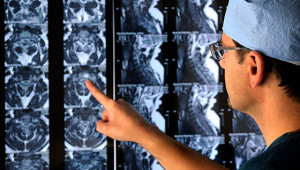3 Forms of Spine Surgery Proven to Restore Spinal Mobility
The primary reasons why individuals seek spine surgery are to lessen pain and increase the mobility linked to the area between the sacrum and neck. This curative measure provided by a spine surgeon is highly sought by many people including athletes and older adults. 
It is fundamental for people dealing with spinal malfunctions or incapacitating back pain to have comprehensive information concerning their ailments and the available options to address such issues. Three popular and proven-effective spinal surgery types to help restore spinal mobility and health are highlighted below.
1. Cervical Disc Replacement
Cervical disc replacement is a type of spine surgery is carried out when non-surgical methods have failed to yield the expected health outcomes. It entails making an incision at the neck prior to replacing the protruding and damaged discs with synthetic discs. The major reason for undergoing cervical disc replacement surgery is to prevent the irritation that damaged discs cause to the spinal nerves supported by spinal cord roots. Damaged discs also cause numbness and pain in a patient’s arms and neck.
Disc replacement is followed by insertion of a bone graft, which ensures that the bones join within a short time. Most of the patients are discharged within a day after undergoing this surgery, with relief and recovery starting immediately. This form of spine surgery should not be done on children.
2. Lumbar Spinal Fusion
The fundamental goal of lumbar spinal fusion surgery is to enhance the stability of lumbar spine. Some of the symptoms to indicate that a patient needs this surgery include stenosis in the lower back and spine as well as hips’ pain. The spine surgery procedure involves making a vertical incision over the spine in the lower back area. During lumbar spinal fusion, the spine surgeon has to temporarily separate the muscle from the bone so as to access the vertebrae. 
It is also necessary to do lumbar discectomy to take out a portion of the vertebrae in order to get hold of the damaged disc. The disc is either removed as a whole or partially, depending on the severity of damage. For mobility and support, the surgeon inserts a bone graft between the vertebrae. The patient is discharged after a few days with the recovery period ranging between 4 to 6 weeks. Full recovery may take a few additional months.
3. Anterior Cervical Discectomy & Fusion
This type of spine surgery should be done when the non-surgical pain relieving methods have failed. A patient needing anterior cervical discectomy and fusion surgery experiences intense pain on the arms and neck because of the pressure exerted upon the spinal nerves. The surgical procedure involves the entire or partial removal of the herniated disc. This removal is necessary in order to minimize the risk of spinal cord and nerves damage.
After anterior cervical discectomy and fusion spine surgery, there is insertion of a bone graft to replace the damaged disc between the vertebrae. The graft will prevent irritation and subsequent collapse of the vertebrae.
Metal plates and screws are used to fix the vertebrae and bone graft in place. Over time, fusion takes place leading to formation of a solid bone piece. Patients who have undergone this form of surgery usually take four to six weeks to recover. However, pain relief occurs immediately after they have been discharged.
For more information, or to consult an experienced spine specialists for these spinal surgery procedures as well as other options, contact:
Progressive Spine & Orthopaedics
440 Curry Avenue, Suite A
Englewood, NJ 07631
(201) 227-1299
www.newjerseyspinesurgeon.com